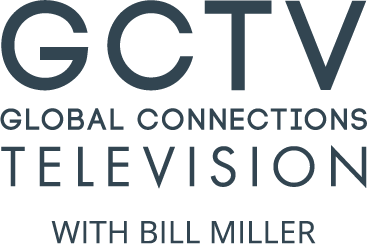"UN: Creating a Better World?"
On September 25, 2015, 193 world leaders convened at the UN Headquarters in New York and committed to achieve 17 Sustainable Development Goals (SDGs) that focused on 3 extraordinary and comprehensive initiatives over the next 15 years: end extreme poverty, fight inequality and injustice, and tackle climate change.
The 17 Sustainable Development Goals (SDGs) built upon the success of the 8 Millennium Development Goals (MDGs), eight goals that the world used as a roadmap from 2000-2015. The MDGs focused on:
--eradicating extreme hunger and poverty (the 8 MDGs motivated and mobilized governments, non-governmental organizations (NGOs), faith-based communities, and civic organizations worldwide to help lift 600 million people out of extreme poverty)
--achieving universal primary education (by 2012 all developing regions were close to or have achieved gender parity in primary education)
--promoting gender equality and women’s empowerment (in 2015, 41 countries touted having more than 30% female members of parliament in at least one chamber)
--reducing the under-five child mortality rate (since 1990, 2.6 billon people have gained access to drinking water)
--reducing the maternal mortality rate;
--combating HIV/AIDS and other diseases (6.2 million deaths were averted from malaria)
--ensuring environmental sustainability
--developing a global partnership for development.
After an extensive multi-year deliberation, the 193 UN Member States have identified 17 goals that include 169 targets geared to ending poverty and hunger, improving health and education, advancing environmental and economic development. The SDGs are:
Goal 1 - End poverty in all its forms everywhere
Goal 2 - End hunger, achieve food security and improved nutrition and promote sustainable agriculture
Goal 3 - Ensure healthy lives and promote well-being for all at all ages
Goal 4 - Ensure inclusive and equitable quality education and promote lifelong learning opportunities for all
Goal 5 - Achieve gender equality and empower all women and girls
Goal 6 - Ensure availability and sustainable management of water and sanitation for all
Goal 7 -Ensure access to affordable, reliable, sustainable and modern energy for all
Goal 8 - Promote sustained, inclusive and sustainable economic growth, full and productive employment and decent work for all
Goal 9 - Build resilient infrastructure, promote inclusive and sustainable industrialization and foster innovation
Goal 10 - Reduce inequality within and among countries
Goal 11 - Make cities and human settlements inclusive, safe, resilient and sustainable
Goal 12 - Ensure sustainable consumption and production patterns
Goal 13 - Take urgent action to combat climate change and its impacts*
Goal 14 - Conserve and sustainably use the oceans, seas and marine resources for sustainable development
Goal 15 - Protect, restore and promote sustainable use of terrestrial ecosystems, sustainably manage forests, combat desertification, and halt and reverse land degradation and halt biodiversity loss
Goal 16 - Promote peaceful and inclusive societies for sustainable development, provide access to justice for all and build effective, accountable and inclusive institutions at all levels
Goal 17 - Strengthen the means of implementation and revitalize the global partnership for sustainable development
The 17 Sustainable Development Goals (SDGs) have been developed with strong U.S. leadership through an intensive consultative process. Consultations were held in 50 cities across the nation that included elected officials, and business leaders, as well as faith based, and civil society leaders. More than 73,000 Americans engaged online with the UN and depicted the world they envisioned in 2030.
The goals indicate longstanding bipartisan foreign policy and development priorities that Republican and Democratic Administrations and Congress have championed, including gender equality, hunger and poverty alleviation, transparency and governance, access to safe drinking water, and improved education.
Although these 17 global goals are built on the successful foundation of the 8 Millennium Development Goals, they represent a greater comprehension of the linkages between poverty, governance, health, gender, climate, and education. These problems do not exist in isolated silos but are intertwined.
The 17 SDGs also involve more key players in the process and go beyond just foreign aid, by stressing the importance of trade and investment from the private sector to accelerate their critical contributions in development, health, and economic and social opportunity. To be successful, a combination of embracing the rule of law, reducing corruption, and strengthening transparency and accountability will be critical.
Polls show that the issues covered by the new goals are highly popular with American voters: hunger, water, poverty, and health are all top issues that Americans want to work on overseas and here at home.
The new set of goals--along with being quantifiable and measurable--promote equity and fairness, will produce meaningful results, and serve the U.S. national interest.
The SDGs provide a roadmap for achieving success but they are not part of a legally binding treaty. The UN is not a one-world government or supranational organization that imposes its will. It convenes the policymakers, experts and general public so they can develop a consensus, workable blueprint for economic and social development. Americans do not need to support every goal to help create a better world by 2030.
With 17 goals and 169 targets, there are ample issues of interest for any group or individual to help achieve. Not everyone will enthusiastically support all of the goals or believe that they are important; however, people should discuss them critically and identify the ones they feel can propel the world in a positive direction. Regardless of whether one is a Christian, Muslim, Jew, or has a civic club association with Rotary, Kiwanis or Lions, or is a public administrator at the local, regional, national or international level, or has any other affiliation or no affiliation, there are areas of interest in some or all of the 17 Global Goals within which to be involved. After all, what is more important than to help create a better world?




